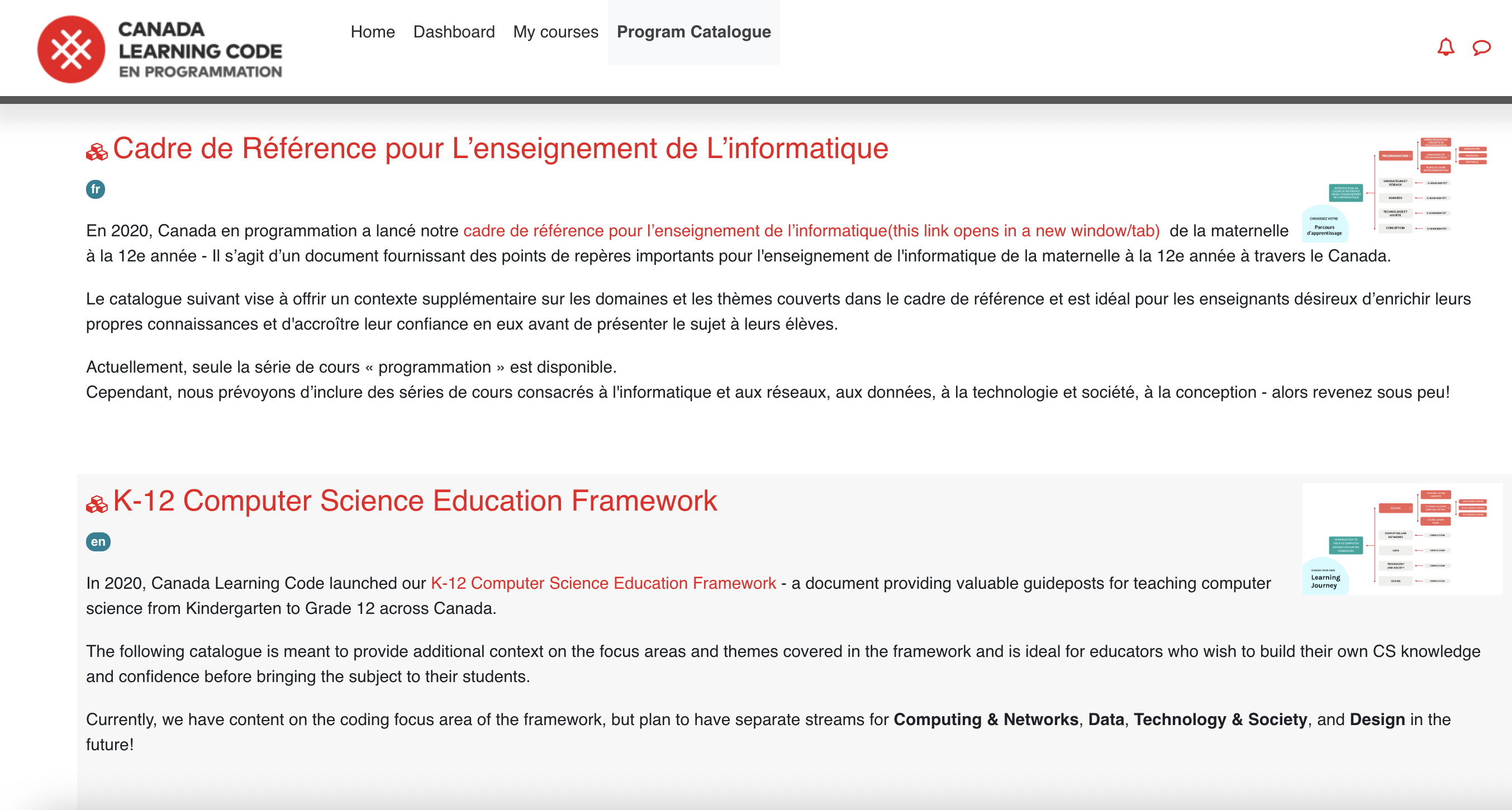Opens in a new window
Opens an external site
Opens an external site in a new window
Teaching Code
All teachers can teach coding. This is why we provide easy-to-follow and understandable resources for teachers without needing previous coding or computer science experience.
Teachers Learning Code is designed to help K–12 teachers with little to no coding experience be able to teach coding fundamentals in the classroom with confidence! We provide lesson plans, workshops and other helpful technology education resources to ensure all educators from all disciplines are set up for success.
Lesson Plans
Teaching code is crucial in today’s digital age as it empowers students with problem-solving skills, enhances creativity and opens diverse career opportunities. Additionally, it fosters innovation, digital literacy and global collaboration, ensuring students are well-prepared for an evolving technological landscape.
With curriculums across Canada rapidly modernizing to include computer science, our goal is to show teachers how to teach digital skills to youth in an easy way. We’re here for you and can equip you with the tools you need to facilitate coding in the classroom and help your students prosper in our rapidly evolving digital world.
Quick Start Guide
We’ve combined our experiences teaching thousands of youth across the country to code, our tips and tricks to get started, resources to familiarize yourself with code.
Download Our Free Guide
Made to help teachers teach code, our newsletter offers accessible resources for your computer science lesson plans.
Get updated monthly
Join our learning tool
Get access to asynchronous courses, training and facilitation resources.
Register today
Explore lessons based on components
The K-12 Computer Science Framework
Although learning how to build digital projects is a key part of Computer Science education, students should also learn a wider set of skills and competencies that will help them to harness the power of digital technologies as both creators and consumers. A comprehensive approach to K-12 Computer Science education includes learning about the following five focus areas:
Programming
By the end of high school, students should be able to create a simple computer program.
Computing and Networks
By the end of high school, students should understand and be able to use the tools and devices commonly used to build digital projects.
Data
By the end of high school, students should be able to explain how we use computers to create, store, organize, and analyze data.
Technology and Society
By the end of high school, students should be able to explore the ways in which technology and society have mutually shaped each other.
Design
By the end of high school, students should be able to apply design principles to the digital projects they create.



